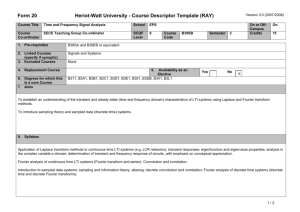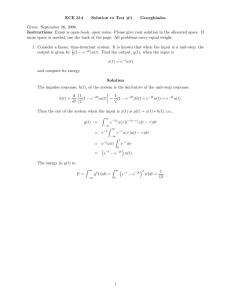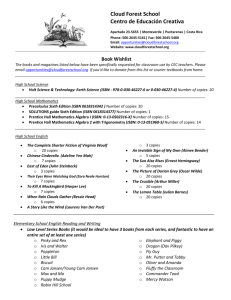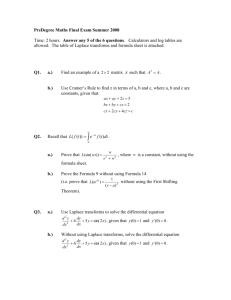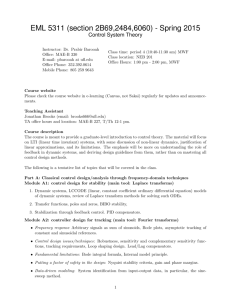CPE260 - Department of Electrical and Computer Engineering
advertisement
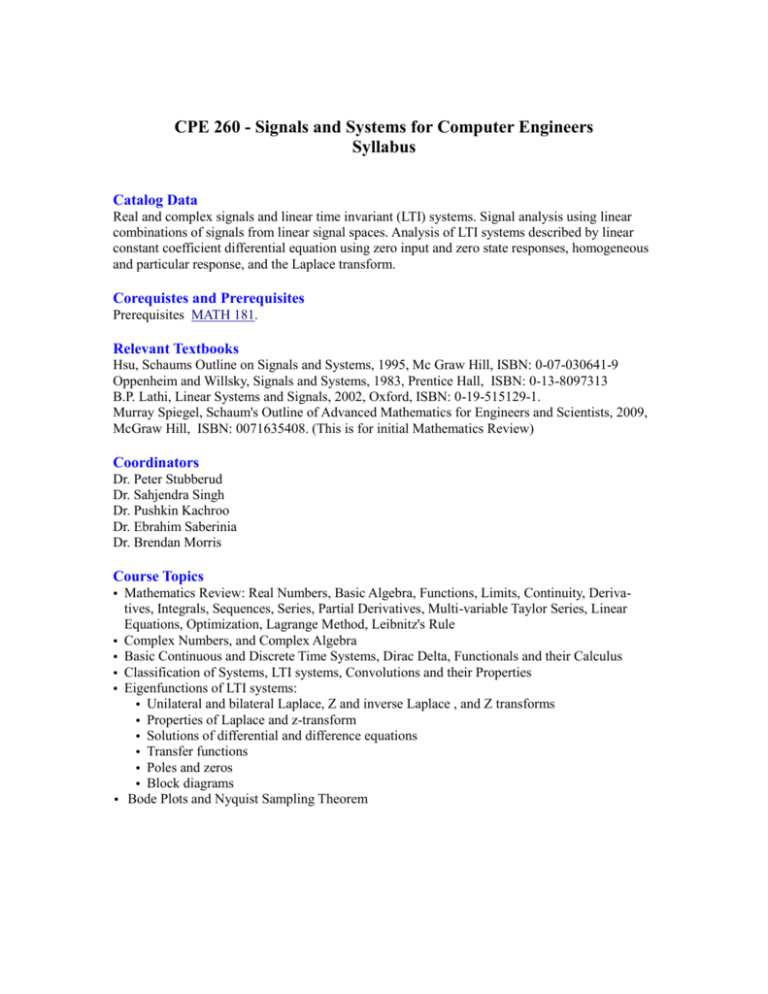
CPE 260 - Signals and Systems for Computer Engineers Syllabus Catalog Data Real and complex signals and linear time invariant (LTI) systems. Signal analysis using linear combinations of signals from linear signal spaces. Analysis of LTI systems described by linear constant coefficient differential equation using zero input and zero state responses, homogeneous and particular response, and the Laplace transform. Corequistes and Prerequisites Prerequisites MATH 181. Relevant Textbooks Hsu, Schaums Outline on Signals and Systems, 1995, Mc Graw Hill, ISBN: 0-07-030641-9 Oppenheim and Willsky, Signals and Systems, 1983, Prentice Hall, ISBN: 0-13-8097313 B.P. Lathi, Linear Systems and Signals, 2002, Oxford, ISBN: 0-19-515129-1. Murray Spiegel, Schaum's Outline of Advanced Mathematics for Engineers and Scientists, 2009, McGraw Hill, ISBN: 0071635408. (This is for initial Mathematics Review) Coordinators Dr. Peter Stubberud Dr. Sahjendra Singh Dr. Pushkin Kachroo Dr. Ebrahim Saberinia Dr. Brendan Morris Course Topics • Mathematics Review: Real Numbers, Basic Algebra, Functions, Limits, Continuity, Derivatives, Integrals, Sequences, Series, Partial Derivatives, Multi-variable Taylor Series, Linear Equations, Optimization, Lagrange Method, Leibnitz's Rule • Complex Numbers, and Complex Algebra • Basic Continuous and Discrete Time Systems, Dirac Delta, Functionals and their Calculus • Classification of Systems, LTI systems, Convolutions and their Properties • Eigenfunctions of LTI systems: • Unilateral and bilateral Laplace, Z and inverse Laplace , and Z transforms • Properties of Laplace and z-transform • Solutions of differential and difference equations • Transfer functions • Poles and zeros • Block diagrams • Bode Plots and Nyquist Sampling Theorem Course Outcomes Upon completion of this course, students will be able to: 1. Classify signals and systems according to the mathematical properties that model them (1.1, 1.2, 1.6, 1.9, 1.10) [1,2] 2. Determine the eigen functions of discrete and continuous LTI systems, and explain their significance. (1.1, 1.2, 1.4, 1.6, 1.9, 1.10, 1.11) [1,2] 3. Use the Laplace transform and z-transform to analyze signals and systems (1.1, 1.2, 1.4, 1.6, 1.9, 1.10, 1.11) [1,2] 4. Produce the Bode plots of various LTI systems, and also prove and utilize the Nyquits sampling theorem. (1.1, 1.2, 1.4, 1.6, 1.9, 1.10, 1.11) [1,2] Program Outcomes 1. The appropriate technical knowledge and skills 1.1. An ability to apply mathematics through differential and integral calculus, 1.2. An ability to apply advanced mathematics such as differential equations, linear algebra, complex variables, and discrete mathematics, 1.3. An ability to apply knowledge of basic sciences, 1.4. An ability to apply knowledge of computer science 1.5. An ability to apply knowledge of probability and statistics, 1.6. An ability to apply knowledge of engineering 1.7. An ability to design a system, component, or process to meet desired needs within realistic constraints 1.8. An ability to identify, formulate, and solve engineering problems 1.9. An ability to analyze and design complex electrical and electronic devices 1.10. An ability to use the techniques, skills, and modern engineering tools necessary for engineering practice. 1.11. An ability to design and conduct experiments, as well as to analyze and interpret data Computer Usage Students use mathematical software or online resources to learn various aspects of LTI systems. Grading Homework Assignments, Tests, and a Comprehensive Final Exam. Course Syllabus Preparer and Date Pushkin Kachroo, Dec21, 2012



